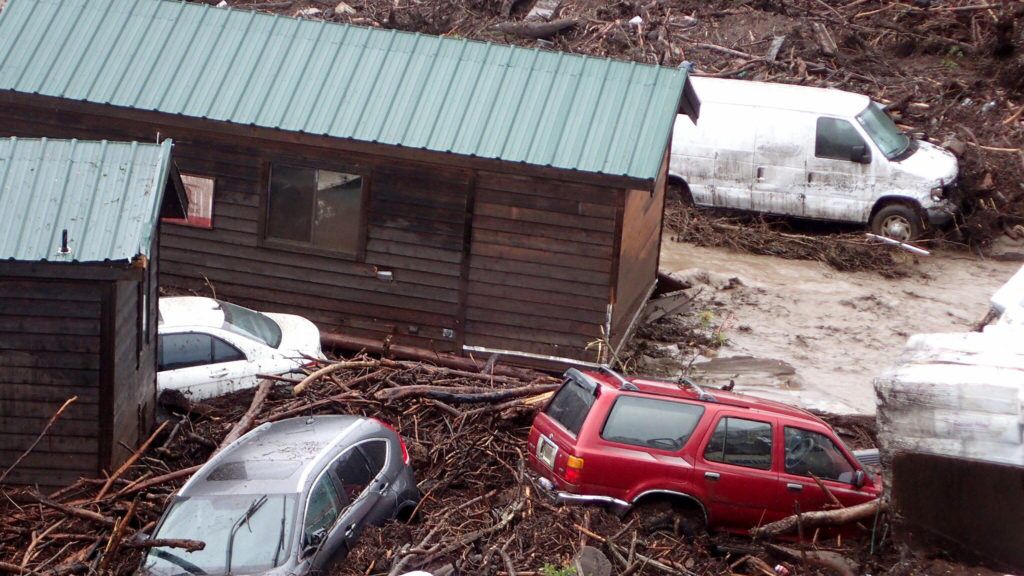By Raiza Giorgi
Santa Ynez Valley Star
Fires have plagued Santa Barbara County in 2017, and local residents need to begin thinking immediately about the danger of flooding in the rainy season, according to Santa Barbara County Public Works officials.
The Whittier Fire burned a broad swath through the Santa Ynez Mountains in July, and the Thomas Fire along the front country of Santa Barbara and Ventura counties is on track to become the largest fire in California history.
The risk of flooding is highest for those in burned areas and downhill or downstream from them, but everyone should pause now to consider flooding issues.
“We don’t know how to model this because the burn area is so big. We are doing what we can to prepare drainage basins and clear creeks, but we urge residents to be prepared to be evacuated again or shelter in place if they become trapped,” said Tom Fayram, the county’s deputy public works director for water resources.
Normally vegetation absorbs rainfall and reduces the amount of runoff, but large wildfires alter the terrain. By denuding slopes and leaving a layer of crust on top of the soil, fires set up conditions for hazardous flash flooding. With violent run-off can come debris and ash that form mudflows.
“The time is now to make sure your flood insurance is up to date, as it can take up to 30 days to activate,” Fayram said.
Fayram also urges homeowners to have evacuation routes or plans to shelter in place, and to prepare their properties before the rainy season.
“There isn’t time (for officials) to go individually and assess what property owners need to do, but prepare for the worst-case scenario,” he advised.
The Whittier Fire burned more than 18,000 acres between the coastal area west of Goleta and Lake Cachuma. Fayram said the only urban area affected was the Embarcadero community in western Goleta.
“We completed our routine channel work and added some emergency clearing above Embarcadero. There are no basins there. However, a debris rack exists above Highway 101,” he said.
Highway 154 could also be affected on the Santa Ynez Valley side of the ridge, but that is in Caltrans jurisdiction, Fayram noted.
The Thomas Fire has burned a broad swath of the front country above Carpinteria and Montecito, as well as the watershed behind Jamison and Gibraltar reservoirs.
“The watersheds above Carpinteria and Montecito are indeed a concern and should be taken seriously. We do have debris basins on many creeks in the area and are now actively working to bring those facilities up to post-fire readiness. Keep in mind these basin are in place and active, however they were built for fires and as such they are now being brought up to ‘fire ready’ condition. We expect that work to be completed soon,” he added.
Public Works also has sandbags available at its facility at 4568 County Road off Calle Real between Santa Barbara and Goleta for those who want to stock up early, with a limit of 25 bags per person. The sand bags are not prefilled.
For more information, log onto www.countyofsb.org/pwd.
Evaluate risks, prepare for flooding
- How close is your house or outbuilding to the closest stream, seasonal draw or valley bottom?
- Could your home become inaccessible? Do you have a bridge or culvert, stream or drainage crossing that could be destroyed by a flash flood?
- Remove debris in or near culverts and drains. This includes rocks, grass clippings, decking, structures, vegetation, fences, etc.
- When walking your property, look for items that may potentially plug stream channels and/or culverts, particularly at road crossings.
- Remember that runoff may cause channels to shift, creating additional stream bank erosion.




